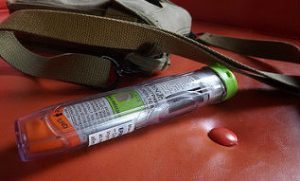The EpiPen, a Case Study in Health Care System Dysfunction
by Aaron E. Caroll, New York Times

Three times in the last two weeks, people — a patient, a colleague and my wife — told me stories about how out of control the price of EpiPens were. Monday, my New York Times colleagues recounted in detail how expensive the devices have become in recent years. All tell the tale of how much even basic health care can cost in the United States.
But by digging a bit further, the story of EpiPens can also explain so much of what’s wrong with our health care system.
When people think of allergies to drugs, food or a bee sting, they often think of a rash. And in fact that’s how many allergic reactions develop and proceed. Most can be treated with diphenhydramine (Benadryl) and careful observation. But some are more serious. Between 1 and 2 percent of people can develop what’s known as anaphylaxis, when the airways you need to breathe swell and close.
Luckily, there’s a simple treatment for such reactions. Epinephrine — or adrenaline — is a hormone naturally produced by the adrenal glands. It’s part of your “fight or flight” response, and it causes your heart to beat faster, your blood vessels to constrict, your pupils to dilate and — most important here — your airways to open.
Continue reading on the New York Times website
Tags: drugs, health care, health care industry, Price Gouging